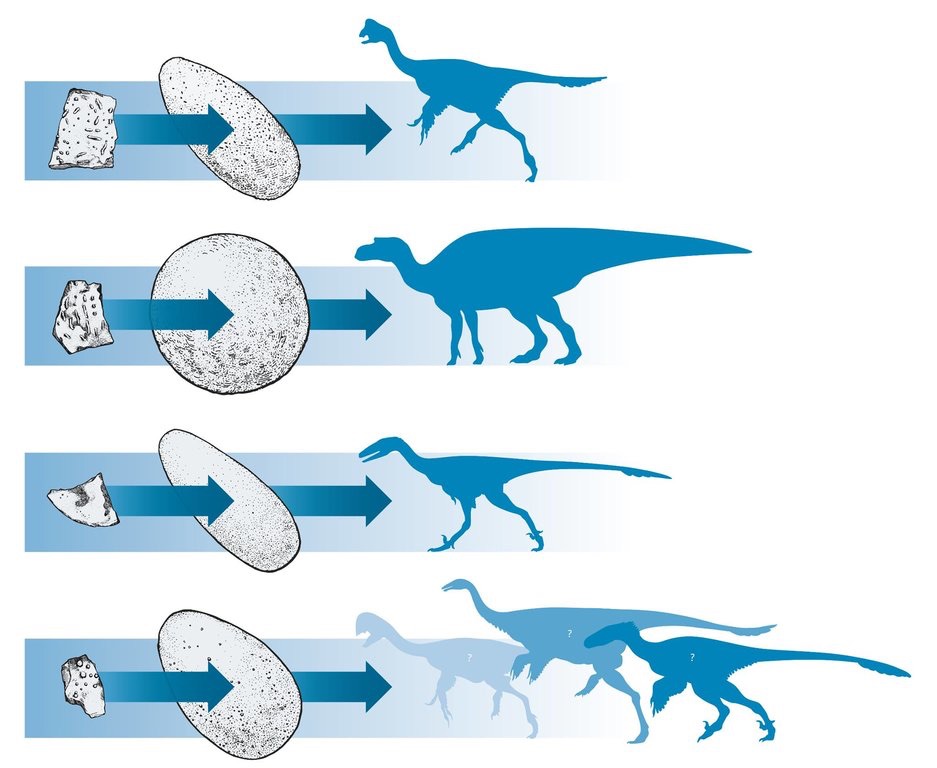The system by which we define and classify fossil eggs is called ootaxonomy. This system, parataxonomic and devised in the 1970s by Zhao Zi-kui, was very successful at grouping fossil eggs at a broad level. In recent years, there has been an explosion in the volume of eggs described, improved computational methods, and an increase in phylogenetic approaches to studying egg evolution. Although some eggs can be principally associated to a single clade–such as Elongatoolithidae with Oviraptorosauria–there remain clades that are underrepresented or ill-defined.
The maniraptoran dinosaurs represent a critical juncture in vertebrate egg evolution, bridging many crucial and rapid trait changes between crocodilians and avians. Using new quantitative methods in conjunction with new phylogenies, I am currently working on better defining ootaxa within Maniraptora, particularly Dromaeosauria, to better understand the evolutionary pathways on the theropod lineage.
